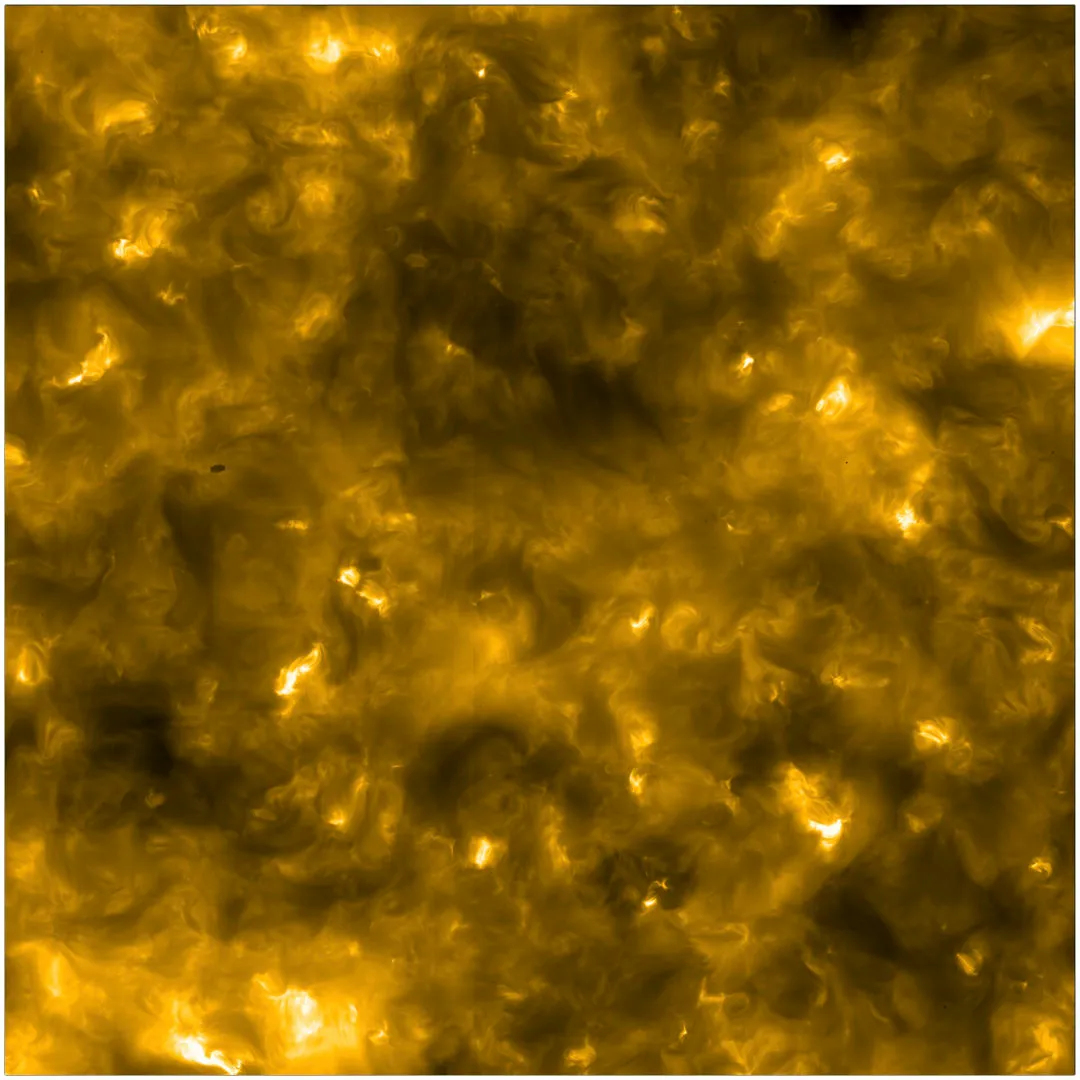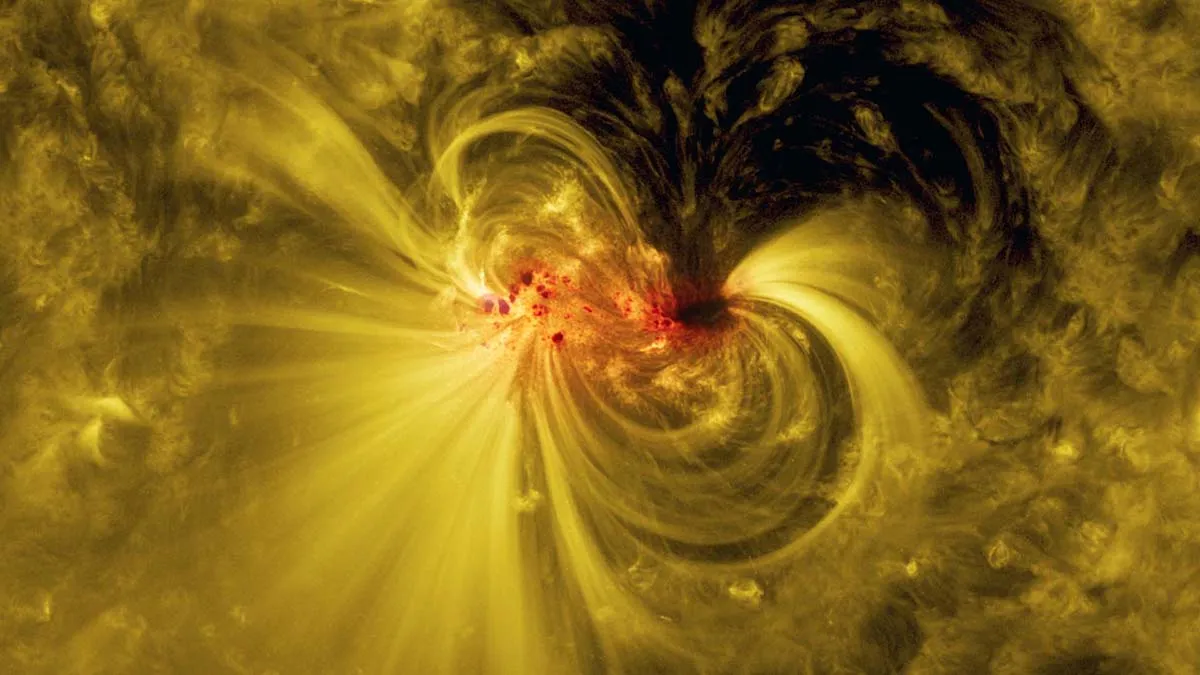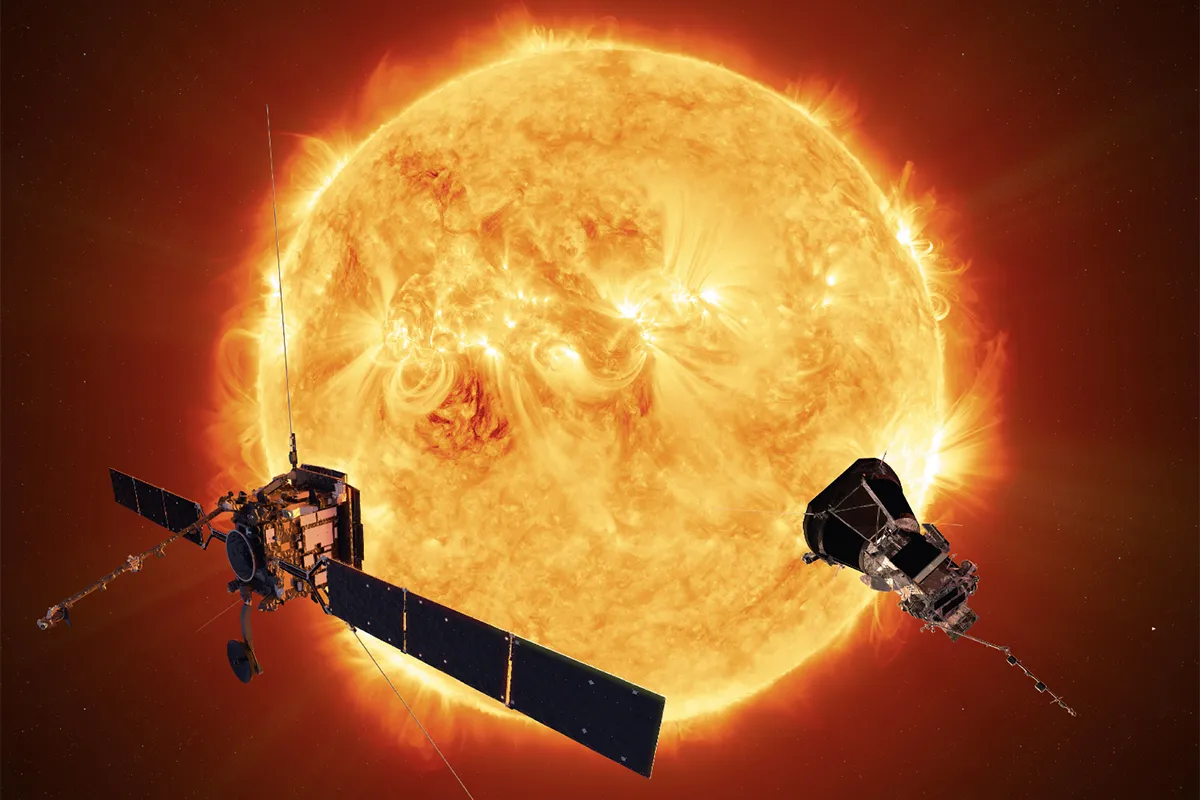When solar scientists measure the external layers of the Sun, something strange happens, and it's known as the Coronal Heating Problem.
The corona, the outermost layer of the Sun, is much hotter than the photosphere below it, and nobody seems to understand why.
However, a study by Ryan Campbell, a research fellow at Queen’s University, Belfast whose research focuses on magnetic fields in the Sun’s outer atmosphere, may have shed light on the mystery.
We spoke to Campbell to find out what the study involved.
Biggest questions about the Sun - answered!

What is the Sun’s outer atmosphere?
It’s easiest to understand from the inside out. The photosphere is the Sun’s visible surface.
It corresponds to a point in the Sun’s atmosphere where visible light or ‘visible photons’ from the Sun’s core can escape.
Photons are emitted from atoms in the Sun’s core and then re-absorbed by other atoms.
This happens over and over again and the light can’t escape.
After a long time, one of these trapped photons will escape from the Sun at the photosphere.
As you get higher above the photosphere, first through the chromosphere and then to the corona, you expect things to get less hot and less dense.
But something weird happens as you reach the corona. Instead of the temperature decreasing, it shoots way up. Nobody really understands why.
This is a big unresolved question called the Coronal Heating Problem.

What are the potential solutions for the Coronal Heating Problem?
Solutions to the Coronal Heating Problem try to explain why the outer layer is millions of degrees hotter than the layers below it.
One explanation relies on wave phenomena in the lower layers, which transport energy up.
Another relies on ‘nanoflares’. Most people have heard of solar flares: intense eruptions of energy in the Sun.
Nanoflares are smaller flares occurring all over the Sun’s surface, which could be an explanation for coronal heating.
What did your investigation involve?
The presence of magnetic fields in the Sun’s plasma changes the light emitted from the Sun.
You can’t physically go and grab a sample of the Sun and take it back to the lab; you have to measure emitted sunlight and work backwards.
We know what sunlight would look like if it was emitted with no magnetic field, but with a magnetic field present we can look at the changes in the light to understand what was going on with the magnetic fields within the plasma.

How do you look at the Sun’s corona?
You have to use a coronagraph. This basically blocks out most of the Sun’s light with a disc so that you can see the corona, which is much dimmer.
Because you have to block out most of the Sun itself, you can’t look at the photosphere and corona simultaneously.
Researchers are now pushing to use space-based tools, like ESA’s Solar Orbiter probe, at the same time as ground-based telescopes to view both corona and photosphere at the same time.
What did your study reveal?
If you follow the direction of a small loop structure in the magnetic field of the photosphere, you’ll find it goes up, across and down.
This is important because, when we talk about energy transport through the outer layers of the solar atmosphere, one of the main mechanisms is magnetic reconnection – where magnetic fields that point in opposing directions can cause explosions of energy.
We found a structure that goes up, across, down, across, and then back up, like a snake.
These serpentine structures have never been observed before.
Because they crest more than once, they have more chances for magnetic reconnection, increasing the potential amount of energy transferred.
We only found one, but if these structures are common, this could be an important mechanism for energy release in the solar atmosphere, helping shed light on the Coronal Heating Problem.

What does the Sun’s magnetic field tell astronomers?
The Sun is a laboratory for physics.
If you understand what’s happening in the Sun’s plasma, you can apply that to so many applications, from fundamental physics to fluid dynamics to plasma physics.
A simple extension is to the photospheres of other stars, which may be hotter or cooler, dense or less dense.
What’s next in your study of the Coronal Heating Problem?
For these observations, we looked at atoms that absorbed particular colours of light in the photosphere.
These are called absorption lines. Different atoms absorb photons of different colours at different layers of the atmosphere.
Observing these simultaneously will help us to infer what’s happening in the Sun’s plasma at different layers – the photosphere, chromosphere or corona – at the same time.
This interview appeared in the February 2024 issue of BBC Sky at Night Magazine
